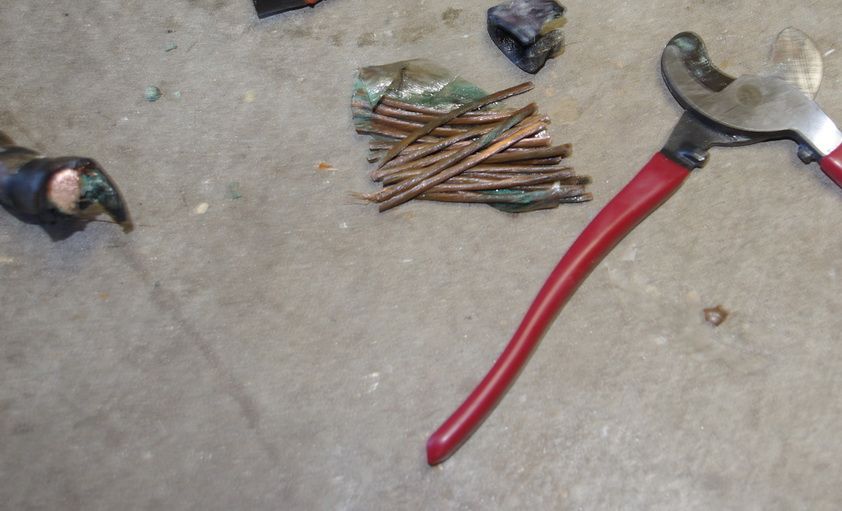Vincentc
Legendary Member
- Joined
- Jun 3, 2008
- Messages
- 1,514
- Status
- OWNER - I own a Hatteras Yacht
- Hatteras Model
- 43' DOUBLE CABIN (1970 - 1984)
Sorry for the misleading title, should have said 12 volt.
Lilly Marie, 1983 43DC has 2 pairs of 12v batteries between the 671ti's. The current cables appear to be 4/0 welding and the insulation has gotten soft and swollen and the wire strands show corrosion. It does not look like a Hatteras quality job, but perhaps after almost 30 years... I want to replace it with tinned battery cables and new terminals.
I have just set up the batteries for my inverter system using 2/0 cable, have become comfortable working with that and have a stock of 2/0 cable, terminals and lugs as well as a 2/0 wire cutter. Using the same materials for the starter/house batteries would be convenient and reduce inventory, but ...
Is 2/0 cable suitable and a good choice here? I cannot find any specifications in the Detroit manual.
The cable run from the positive posts to their battery switches is about 3 feet, each. The battery pair posts are 2 feet apart and the cable run from the negative post is less than 2 feet.
All 4 negative posts are connected by a single negative cable running from the port engine to the port negative posts then to the positive posts then to the stbd engine.
The cables from the switches to the starters look good.
Thanks,
Lilly Marie, 1983 43DC has 2 pairs of 12v batteries between the 671ti's. The current cables appear to be 4/0 welding and the insulation has gotten soft and swollen and the wire strands show corrosion. It does not look like a Hatteras quality job, but perhaps after almost 30 years... I want to replace it with tinned battery cables and new terminals.
I have just set up the batteries for my inverter system using 2/0 cable, have become comfortable working with that and have a stock of 2/0 cable, terminals and lugs as well as a 2/0 wire cutter. Using the same materials for the starter/house batteries would be convenient and reduce inventory, but ...
Is 2/0 cable suitable and a good choice here? I cannot find any specifications in the Detroit manual.
The cable run from the positive posts to their battery switches is about 3 feet, each. The battery pair posts are 2 feet apart and the cable run from the negative post is less than 2 feet.
All 4 negative posts are connected by a single negative cable running from the port engine to the port negative posts then to the positive posts then to the stbd engine.
The cables from the switches to the starters look good.
Thanks,


